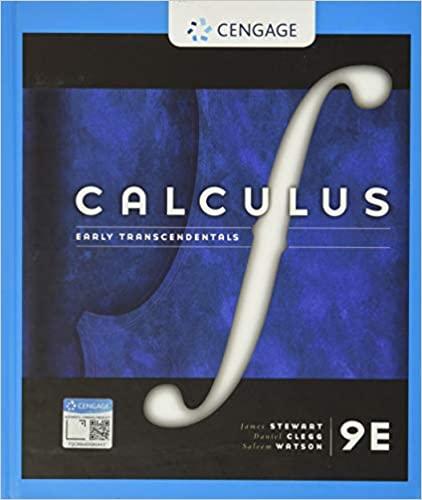A disk of radius 1 is rotating in the counterclockwise direction at a constant angular speed .
Question:
A disk of radius 1 is rotating in the counterclockwise direction at a constant angular speed ω. A particle starts at the center of the disk and moves toward the edge along a fixed radius so that its position at time t, t ≥ 0, is given by r(t) = tR(t), where
R(t) = cos ωt i + sin ωt j
(a) Show that the velocity v of the particle is
v = cos ωt i + sin ωt j + tvd
where vd = R'(t) is the velocity of a point on the edge of the disk.
(b) Show that the acceleration a of the particle is
a = 2vd + tad
where ad − R0std is the acceleration of a point on the edge of the disk. The extra term 2vd is called the Coriolis acceleration; it is the result of the interaction of the rotation of the disk and the motion of the particle. One can obtain a physical demonstration of this acceleration by walking toward the edge of a moving merry-go-round.
(c) Determine the Coriolis acceleration of a particle that moves on a rotating disk according to the equation
r(t) = e−t cos ωt i + e−t sin ωt j
Step by Step Answer:

Calculus Early Transcendentals
ISBN: 9781337613927
9th Edition
Authors: James Stewart, Daniel K. Clegg, Saleem Watson, Lothar Redlin





